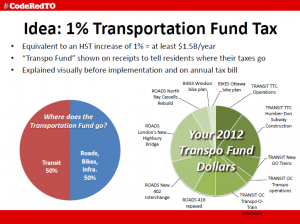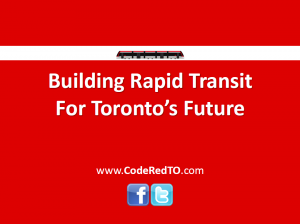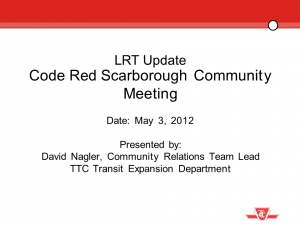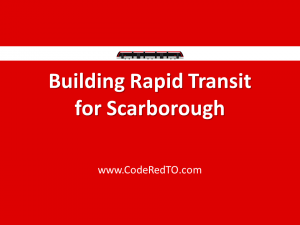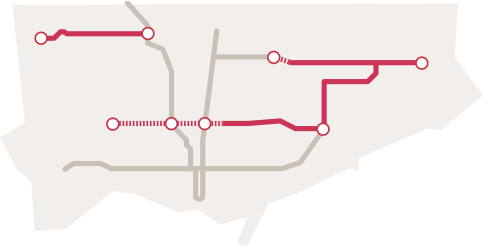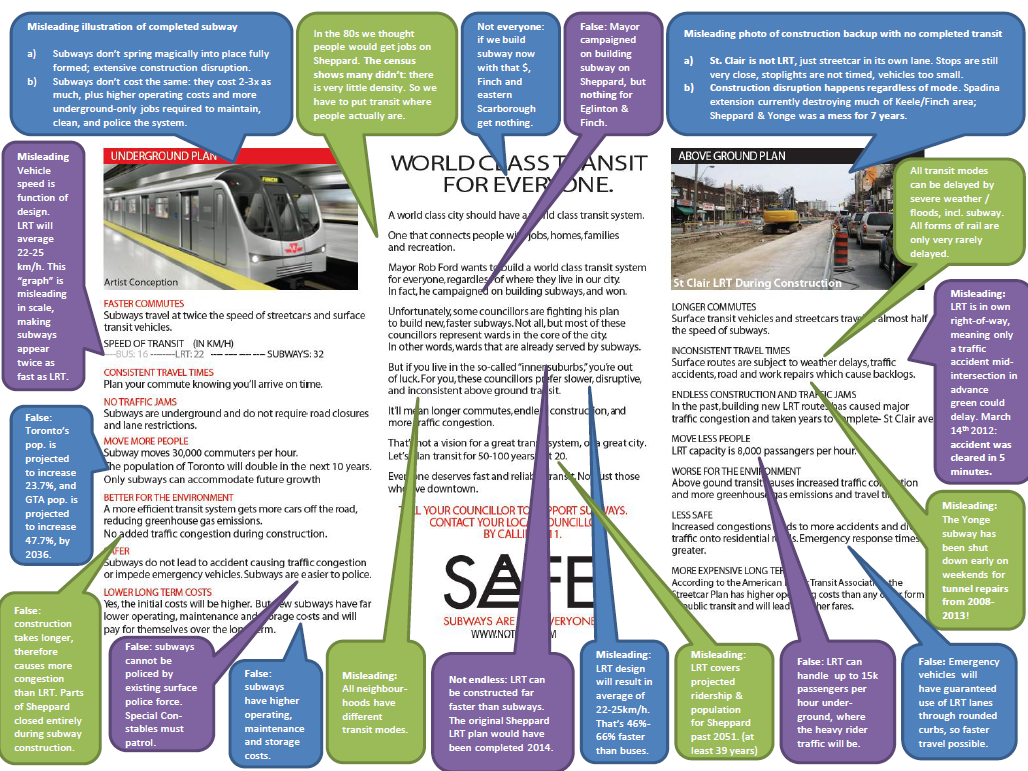On June 6th, a representative of CodeRedTO spoke to the Standing Committee on General Government at the Ontario Legislative Building (commonly referred to as Queen’s Park). The committee is studying congestion and gridlock, and also heard presentations from Metrolinx, the TTC, several cities and regions including Toronto and Ottawa, TTCriders, and others. (Click to view the June 4 and June 6 agendas; the full transcript or recording will eventually appear on the committee website here)
We were given 10 minutes to speak, and 5 minutes for questions. On such a deep and often technical topic, this was a very slim timeframe to work with. The decision was made to focus on some simple history and facts, one big idea, and several appendices to include other information that the MPPs may be interested in reading later. (Click to download the full presentation, 2 MB PDF)
The “one big idea” chosen was the idea of a transportation-specific tax, possibly connected to a referendum, using Los Angeles County’s “Measure R” as a template. A 1% increase in the Ontario HST province-wide, dedicated to transit, road, and bike infrastructure, would net about $1.5B per year and should be designed to bring funding back into every community in a consistent and non-partisan way.
Our presentation began with a mention of specific transportation issues in committee members’ ridings, which drew nods from all parties as they clearly understood the funding problems their constituents often face. During the question segment, a representative from each of the PCs, the Liberals, and the NDP expressed their thanks for the engaging and clear presentation. They then asked questions based on either genuine interest or political hobby-horses, depending on one’s preferred party.
Some of the questions that were asked (and which many other presenters were also asked) included:
- What do you think about LRT vs subway? (PC)
- Our response: Toronto is one of the only cities on the planet that uses only buses and subways. [Not said: Streetcars in this question function as buses, in that they are slow and low-capacity compared to the modes in question.] Every other advanced transit system uses a mixture of modes for different situations. We advocate for the right technology in the right place at the right time, and we want better rapid transit options for more residents, sooner. Sometimes that means LRT, sometimes it means subways, sometimes it means neither.
- Did you ask anyone outside Toronto about this tax idea? (Liberal)
- Our response: no, this is not meant as a formal proposal and though we have heard strong messages of support from outside Toronto and Ottawa, this has not been formally measured.
- What do you think about TTC vs Metrolinx construction of LRT lines, that is AFP/P3 vs more TTC control? (NDP)
- That is very far outside our areas of expertise, and while we want more rapid transit sooner, and AFP approaches have worked well in Europe but perhaps less well in North America, we have no opinion on this as we don’t have the expertise.
- Were any other revenue methods considered? (Liberal)
- Yes, in that we think there are many methods to gather revenue that should all be explored and used, rather than sticking to just one revenue generator.
CodeRedTO was happy to be able to present, and we mentioned in our presentation and reiterate here that we receive no funding or talking points from any political party, group, or elected individuals. We are happy to bring presentations of varying lengths about light rail, about transit expansion, about the pros and cons of various technologies and designs, to any public meeting should an MPP (or anyone!) like to invite us.
